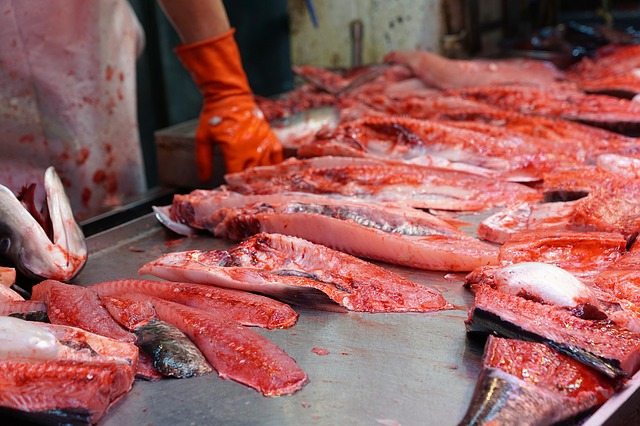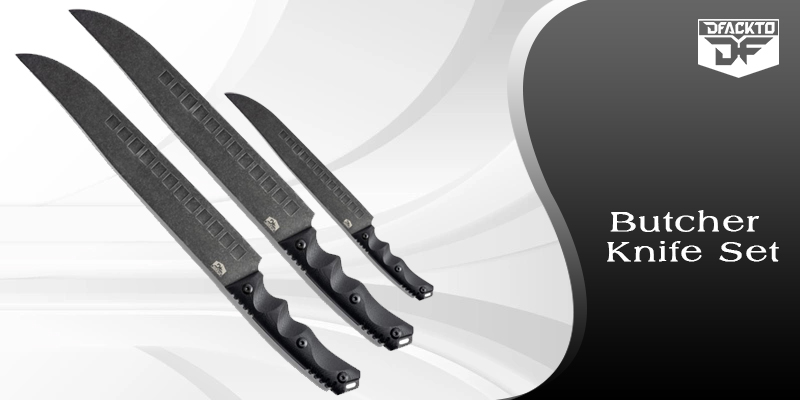One of the gratifying elements of catching your fish is preparing ready it. There is something that can leave their spouse rather than their preparations or some other person. Fishing does not finish when you hit the dock. Now is the time to clean your fishing. In most cases, you have to go back to the dock with the regulations, so you must perform the necessary task of filleting your fish at the Fillet Station or at home. To fillet a fish is to separate the flesh of the fish from the bones so that all bones are removed. Equipment for Fish Fillet knife is a messy job but with the right tools, it can be done at any time.
- The perfect knife for fish fillet is a vital part of your equipment. Your fillet knife should make you the highest quality stainless steel capability. Fitting a good quality filtration knife can work quickly and it can also be used for other family activities. With correct care, it will last a lifespan. Fillet knives have long, versatile blades that enable you to cut finely between the fillet meat and bones. Always make sure that your knife is sharp for optimum performance.
- A Regular family knife for cleaning the scales off the fish (optional)
- Use a pair of scissors for clipping fins
- A clean solid surface to work on
- Lots of an apron and paper toilet
Cutting Surface Ideally, you’ll have to a fillet table to cut your fish. If you do not, a big cutting board with drip edge will be good. It is best to use polyethylene material, it’s straightforward on your knife and does not hold the fish smell. Look for UV resistant and marine grade for longer life. Other Supplies
- Water for washing off fish as you work.
- Gloves for protecting your hands from birds or punctured by your knife.
- Scale removal fish to remove scales before you start filleting.
- Gallon size zipper bags to store the cleaned fillets.
- Cool with fresh ice for keeping the fillets fresh until you get it in the refrigerator.
How to Fillet Fish
Step 1 Scale the fish. Put the fish on a cutting board. Remove all the scale Rome fish using a sharp kitchen knife
Step 2 Trim the fins. With a sharp scissors remove all fins from the fish, from the top, sides, belly, and back
Step 3 Gut the fish. The surface of the knife is used using a fish knife inside the fish’s stomach. Run the knife to open the stomach from the tail of the fish. Just remove the stomach contents except for the meat and bones and clean the fish. Wash the fish in cold water. Clean the cutting board and return to the fish board.
Step 4 Remove the head (optional). Just put a knife down the gills and make a sharp cut by removing the head.
Step 5 Making the cut. With the tail facing you run the knife from the top of the spine down the tail, slicing gently. As you do, you will be moving the knife blade between the spine and the flesh. Do this till the fillet (flesh) separates from the spine.
Step 6 The Fillet. Following the shape of the fish, you used to separate the meat from the meat ribs on one side of the flesh while working in the knife at the lower speed of the rib bones and the flesh. Flip the fish over and repeat the method for the opposite facet of the fish. You must be more careful when removing the second fillet. If it’s your first time filleting fish, you ought to follow on a smaller fish first. Big fish will be more challenging. Remember the goal is to remove flesh from the bones. Skillful and correct use of the knife is crucial to the current method. Remove the fillet check for the remaining bone in Fillet and remove them to drag them by hand. You are now ready to prepare your fish fillets.

How to Fillet a Flounder
- Flounders are slightly different than most of the fish because they are flatfish.
- Flounders have four fillets per fish, two both sides.
- Unanimously the first white part is torn off because you get more leverage because this side is more flexible and at the top of the texture.
- The commercial fisherman cut the first head and then placed his knives in the body along the rib cage and the spine. They are efficient and quick and will not recommend this method only for us.
Steps
- Preparation: Wash the fish slime off as much as possible, so it makes it easier to manage the Flanders.
- For the big flounder, scale the first fish, then rinse.
- Make the gill cut down to the bones behind the gill.
- Make the “T” cut down the lateral line from the gill cut to the tale.
- The “T” ending process cut down to the bones along the backbone.
- Make a long vertical stroke between the skin and the ribs to make the release meat, Filleting bottom and side using the tip of the fillet knife.
- Step 6 and filleting on the same step as.
- Then repeat 3 to 6 steps topped
- Skinning the Fillets With fillet still hooked up to fish, flip fillet over to skin aspect down, beginning at the tail finish lay you knife flat and run it between the skin and also the fillet all the way to the end


